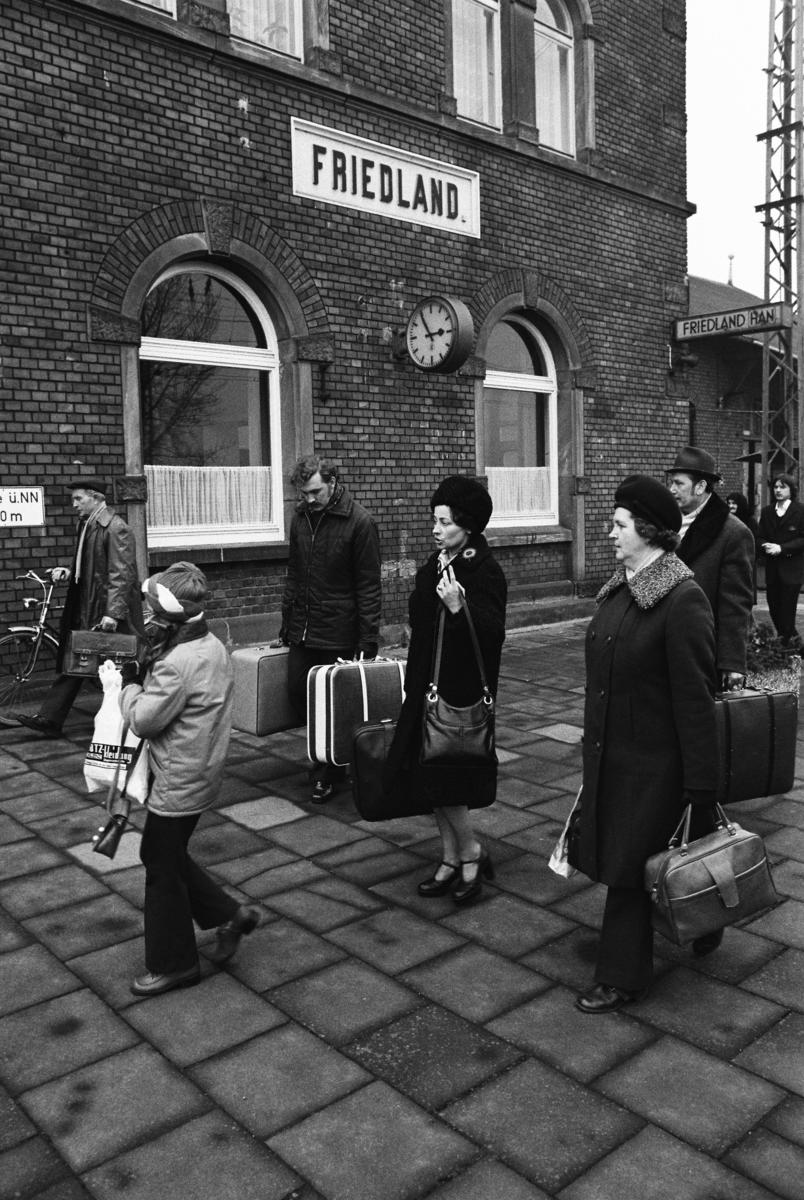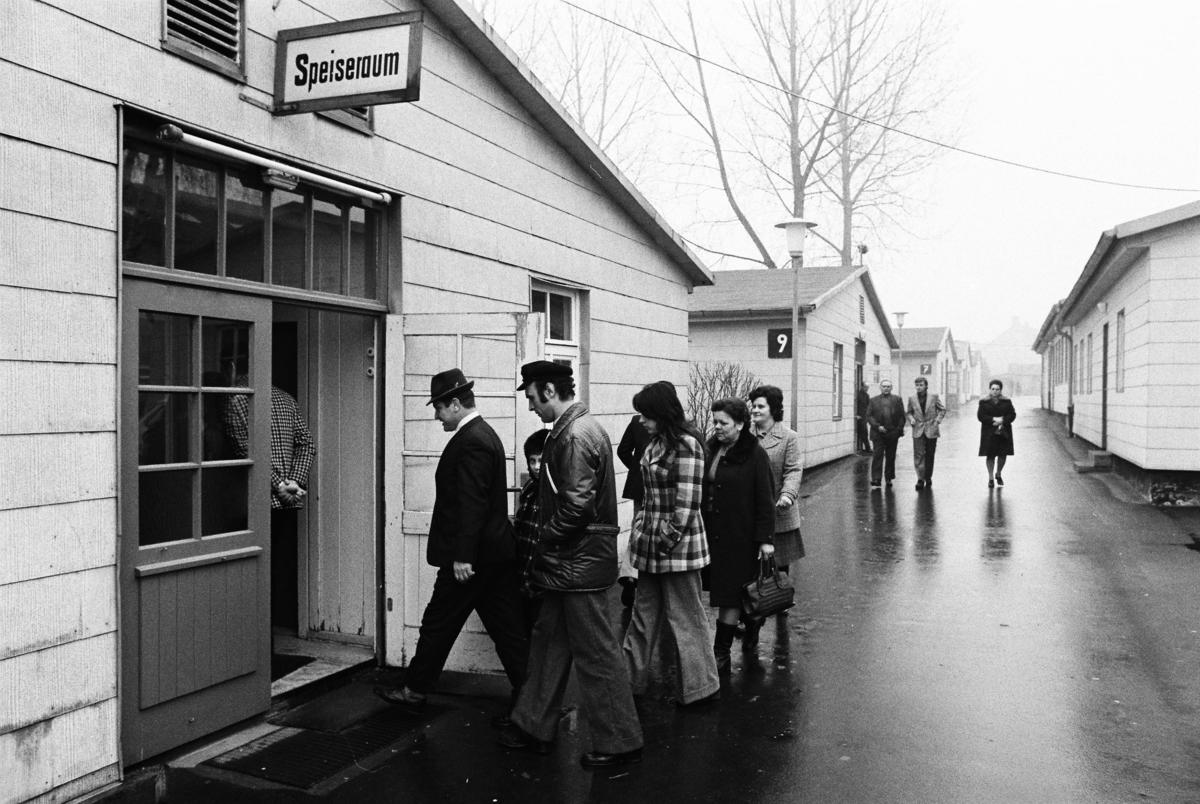Source
Source: Polish ethnic German resettlers [Aussiedler] arriving at the Friedland train station (Image 1) and then entering the dining area at the Friedland camp. A government-run center in the federal state of Lower Saxony, the Frieland camp was the first point of contact in the Federal Republic for ethnic German resettlers from Eastern European. There they received housing and meals. Date: March 16, 1976. Photos: Ulrich Wienke. Signatures: B 145 Bild-00079620, B 145 Bild-00079619. Bundesbildstelle.

